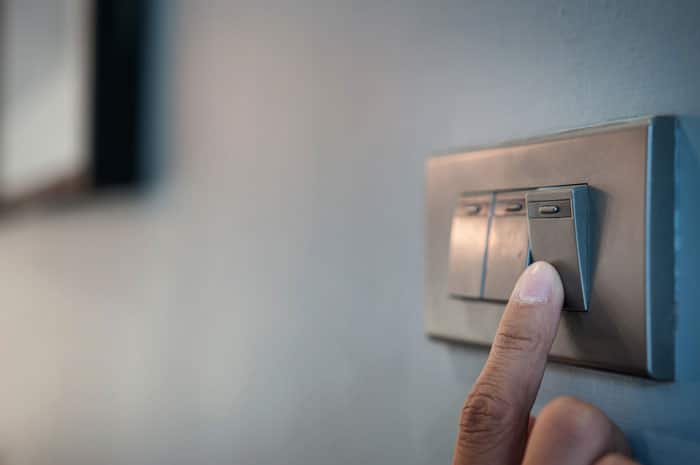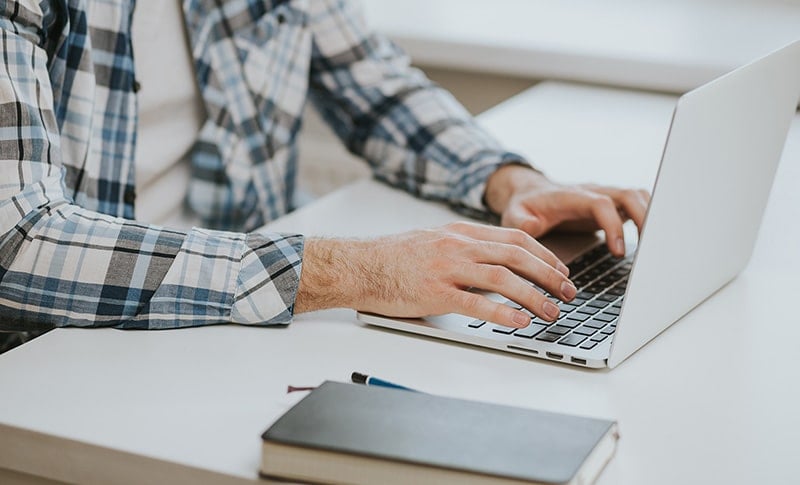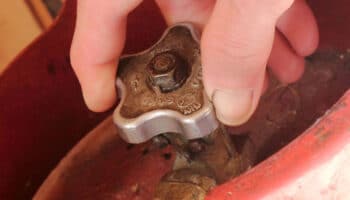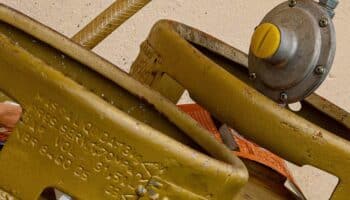We've independently reviewed this article to make sure it's as accurate as we can make it.
To find out more about our article creation and review process, check out our editorial guidelines.
Does your circuit breaker keep tripping with nothing plugged in? You’re not alone! While the whole incident can be very annoying and frustrating, it’s also very common, and the solution is often simple.

There are many reasons why your circuit breaker is tripping. The tripping can be a sign of overload, short circuit, or ground fault. You can try resetting the breakers by cycling them – turn them completely off (you should hear a click) and then turn them back on.
Below, you’ll find an article including the simplest ways to address a circuit breaker that keeps tripping with nothing plugged in.
Ready? Let’s get started!
Why trust us? This article was written by Craig Anderson and Brian Paul.
Craig has helped thousands of other homeowners repair their appliances since 2016.
Why Is Your Circuit Breaker Tripping?
If your circuit breaker is tripping without anything plugged in, I find it can be due to something as serious as a short circuit, to something simple like a lack of attention.
Circuit breakers trip when they exceed the maximum amperage they’re designed to hold and this is called “overloading”. The switch will automatically flip to the “OFF” position and show a red area to alert you that it has tripped.
If you unplug everything, but the circuit breaker still trips, here are some possible reasons:
Something Could Be Plugged In
Circuit breaker switches are typically wired to different areas of your house. If you don’t know the exact area your breaker covers, chances are something is causing the tripping that has gone unnoticed.
The culprit can be virtually anything. From a blender with frayed cables to a wall outlet with several appliances and devices connected to it. I recommend searching inside and outside the house to see whether there is any device you have not turned off that could be using the same breaker that keeps tripping.
A Damaged Wire (Short Circuit)
If you’ve ruled out other devices and your circuit breaker keeps tripping with nothing plugged in – my usual advice is to consider a faulty input wire next. Breakers are designed to stop dangerous electrical currents from causing damage to your appliances and starting fires.
So, if your breaker tripped due to a short circuit coming from a faulty or damaged cable, you’re in luck, as the situation could be much worse!
A Ground Fault
A ground fault happens when an active or hot wire makes contact with the ground wire, an appliance’s grounded area, or the junction box’s grounded portion.
In my experience, ground wires are usually bare copper or aluminum (unlike green ground wires in an appliance), hot wires black, and neutral wires white. When the hot and ground wire come into contact, or if the black wire contacts the neutral wire, large currents flow through the circuit breaker, leading to a trip.
The Breaker Itself Can Be to Blame
If your circuit breaker keeps tripping with nothing plugged in, it could also be that the breaker itself is at fault.
Like everything else, circuit breakers experience wear and tear. From what I’ve seen, if your breaker is older than 10 years, it will likely fail for such a reason, especially if it trips frequently. Consider replacing the breaker to solve the problem.
Such a repair is best handled by a professional, so please call a certified electrician as soon as possible.
Fixing Your Faulty Circuit Breaker
Now that you know all the possible reasons why your circuit breaker keeps tripping with nothing plugged in, let’s dive into what you can do to solve the problem.
Step 1: Turn off the Light Switches
When your circuit breaker keeps tripping with nothing plugged in, start by turning all the lights off and unplugging all the connected devices and appliances in the rooms that have lost power.
Unplugging everything makes it easier to pinpoint whether the issue comes from a bad device/appliance or the breaker itself.

Step 2: Identify the Tripped Circuit Breaker
Go to your circuit breaker box, open it, and locate the tripped circuit breaker switch. In my experience, circuit boxes are typically positioned in an open area away from elements and obstructions. Most circuit boxes are enclosed in a small metal plate with a simple lock.
Your circuit breaker will produce a humming sound when overloaded before tripping. Please ensure the breaker switch is completely flipped to the “OFF” position before touching it, as otherwise, a dangerous electrical current might still be flowing.
Step 3: Test Your Circuit Breaker
When your circuit breaker keeps tripping with nothing plugged in, testing it can go a long way. Depending on how familiar you are with the process, you might already know what to look for, but if not, please flip the breaker’s switch back to the “ON” position with devices and other electronics unplugged.
Then, look closely for the following signs:
- The lights return, but the breaker trips after a few seconds.
2. The lights flicker “ON” and “OFF” as the breaker trips immediately.
Provided the breaker still trips with nothing plugged in, you’re either dealing with a faulty breaker or an internal wiring problem. Believe it or not, I’ve seen instances where rats and other small animals chew through the wiring behind a home’s walls, causing short-circuiting – so please, don’t rule anything out.
Also, consider the possibility of a leaky shower or excess humidity behind your home’s walls – especially during the rainy season or if you live in a humid area.
I strongly recommend calling an expert to take a closer look at the problem.
Step 4: Switch off Your Appliances and Lights Again
If you’re dealing with an overload, start by turning everything off and checking what could be on and causing the trip. Most overloaded breakers don’t turn off immediately. Instead, they try hard to power all the switches and outlets until they’re too heated and overwhelmed.
Switch off all appliances connected to the breaker immediately to prevent an electrical power surge when resetting it. You might need to start turning on the devices one by one several times to find the culprit.
Step 5: Check the Input Wires
Provided your circuit breaker keeps tripping with nothing plugged in, yet the lights stay on, take a closer look at your appliance’s/device’s wiring.
Something as simple as a frayed blender power cord can cause a short circuit large enough to trip the breakers and explain your current situation. Try plugging your appliances/devices one by one to pinpoint the culprit.
The moment you plug something in the breakers trip, you know you’ve found the source of the issue.
Step 6: Reset the Circuit Breaker
Once you’ve identified the faulty wire and fixed or replaced it, it’s time to reset the breaker. To reset your breaker, flip the switch to the “OFF” position and back on.
Step 7: Replace Your Circuit Breaker
When all else fails, your last resort is replacing the circuit breaker. The process is simple; however, remember that you’re dealing with high-voltage wiring, so if you feel uncertain about what you’re doing, please stop and call a professional for help.
The steps below are for common circuit breakers; however, each brand and model may be different. Ensure you follow the directions in your manual for the proper steps. If you’ve lost your manual, try searching the brand, model number, and “manual PDF” online or refer to our free resource below.
- Flip all your circuit breaker switches to the “OFF” position before starting any work on them.
- Use your screwdriver and carefully remove the breaker panel cover plate. Next, find the breaker that needs replacement and turn it off by flipping it to the “OFF” position.
- Extend the wire connected to the breaker slowly out of the panel while trying not to touch other wires.
- Grasp the edge of the old breaker and pivot it towards the outer side of the panel. The breaker should snap free from the panel.
- Disconnect the wires in the black circuit by unscrewing the terminal and gripping the wire.
- Attach the black circuit wire to your new circuit breaker by inserting the bare end of the wire under the screw terminal on the breaker. It’s usually labeled LOAD.
- Insert the breaker by hooking the back of the new breaker into the holder clip at the back and push the breaker forward into the rightful place. Make sure the breaker aligns with the bus bar as you insert it.
- Neatly fold the excess wire and tuck it into the panel. Again, be careful not to touch other wires or metal parts.
- Replace the panel cover and its screws. Then, flip the toggle lever to the “OFF” position before turning the main breaker on to prevent sudden high power demand on electrical services.
- Flip the main switch level to the “ON” position, and you’re all set.
What to Do if a Breaker Won’t Reset
If your breaker doesn’t reset, I highly suggest you contact your electrician to check the problem. There could be a ground fault, short circuit, circuit overload, or simply a faulty breaker that needs replacement.
Signs of a Faulty Breaker
There are many warning signs that your breaker is faulty, primarily if it hasn’t been serviced in the last 10 years. Replace your breaker if you notice the following:
- A burning smell coming from the electrical box.
- Your breaker won’t reset.
- The breaker trips frequently.
- Scratch marks or signs of wear and tear on the breaker.
Keeping Your Circuit Breaker From Tripping
When your circuit breaker keeps tripping with nothing plugged in, you can be left confused and frustrated, as pinpointing the source of the issue can be complex.
However, as I hope this piece has helped you better understand, addressing the most common culprits behind the situation is often simple. More often than not, resetting the circuit breaker and checking your appliance’s/device/s power cords will do the trick.
Thanks for reading. If this article was useful and answered your questions, please check out our other resources and free guides below and consider subscribing to our newsletter.
Have a wonderful week!
-Craig.









